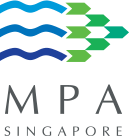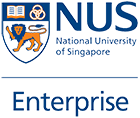Building maritime cybersecurity resilience
Digitalisation (AI, Cloud, Cybersecurity)
BACKGROUND
With the rapid advancement of technology, operational technology (OT) systems on ships, command and control systems of drones, and unmanned autonomous vehicles (UAVs) have become integral to their efficient and safe operation. However, the increasing connectivity of these systems exposes them to significant cyber threats. Unauthorized access, malware and cyberattacks can lead to severe disruptions, compromising safety, data integrity and mission success. How might we develop lightweight and scalable solutions to remotely monitor operation technology (OT) systems of ships; command and control systems of drones; or unmanned autonomous vehicles that can be monitored at cybersecurity operation center (CSOC) for real-time anomaly detection and/or preventive intervention to against cyber interventions?
SIGNIFICANCE OF PROBLEM
- High profile cyberattack cases: Maersk (lost USD 300 million)[1], DNV (affected 1,000 ships)[2]
- Financial costs of a cyberattack can go up to an average of USD 550,000 for the targeted organisation, which is a 200% increase from 2022[3]
- Other than financial costs, cyberattacks also create environmental, safety and reputational risks
- Ransom amounts have also increased by more than 350% in the past 12 months 10
POTENTIAL MARKET SIZE
- The maritime security market size is estimated to be USD 28 billion in 2024, growing at a CAGR of 7.32% till 2029.
- Challenges in software supply chain in the maritime industry.
- Human factors amongst seafaring crew remain a cybersecurity concern and 71% of maritime professionals are concerned about staff being an unintentional threat due to human error.
- Vulnerabilities within operational technology and Internet-of-things such as shipboard operations.
- LEO service providers do not have firewalls embedded and could be potential customers for cybersecurity start-ups.
- Ship owners and operators would be willing to pay for monitoring and detection of cyber risk onboard vessels.
EXISTING EFFORTS
- There are very few maritime-specific solutions in the market (less than five).
- Operational Technology (OT) cybersecurity courses are available, but none specific to the maritime industry.
- Whitelisted USBs are currently kept with the captain.
- Establishment of Maritime Cyber Assurance and Operations Centre (MCAOC).
- Development of Maritime Testbed of Shipboard Operational Technology (MariOT) system.
SOLUTION SUCCESS PARAMETERS
- Cost-effective and ease of use.
- Ability to work within a 64 kbps Internet speed, and compatibility with service providers such as VSAT and satellite links.
- Scalable to handle varying numbers of devices and systems, from small fleets to large operations.
- Timely alerts to enable quick response for ships under attack.
- Monitoring and detection of vessel or drone cyber risk at MCAOC, to complement their solutions.
- Enable cybersecurity operation centre to deploy preventive measures such as automated responses, alerts, and mitigation strategies.
- Intuitive and user-friendly interface for monitoring and managing alerts.
- Performance metrics detection. KPIs such as detection rate, false positive rate, response time, and system uptime meeting or exceeding industry benchmarks.
- On board deployment with hardware dimensions fitting into a 18U rack.
- Lightweight application as most onboard computers have limited performance.
POTENTIAL SOLUTION SPACES
- Technical solution that monitors and detects cybersecurity threats and risks remotely and cost effectively onboard vessels, port facilities, and networks.
- Technical solutions to be deployed on OT/IoT, sensors, etc. onboard vessels, port facilities, and networks to prevent cyber intrusion.
- Solutions to reduce human intervention in cyber events onboard vessels, port facilities, and networks to prevent cyber intrusion.


